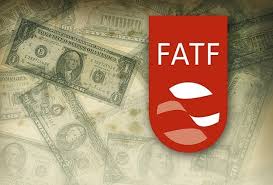By Mark Baber
June 23 – Whilst most attention has been focused on the role of the FIFA President and General-Secretary in relation to the current US and Swiss investigations of corruption in football, a largely unnoticed statement by the Financial Action Task Force (FATF) – the inter-governmental body whose responsibility it is to promote policies to protect the global financial system against money laundering – has pointed a finger of blame at financial institutions.
According to an FATF statement on its web site: “Recent reports about alleged corruption and money laundering activities on a large scale by several high-ranking FIFA officials, underscore how important it is that financial institutions identify and monitor high-risk customers.
“In these cases, financial institutions do not appear to have given a sufficient amount of scrutiny to the financial activities of the officials concerned, as many of these allegedly corruption-related transfers passed through the international financial system undetected.”
The FATF issued a warning about the vulnerabilities of football to money laundering activities in 2012 when it said “the investment of money into the sector has increased exponentially, and some of this has criminal connections,” warning that “Despite the rapid growth and high-visibility of the football sector, however, football’s regulatory structure has not yet caught up with these changes.”
In July 2009 an FATF report entitled ‘Money Laundering through the Football Sector’ stated that “Creating an understanding of the money laundering risks associated to the football sector amongst government bodies and the private sector, including financial institutions, is critical.”
Now the FATF is emphasising that its standards, including recommendation 10, “require financial institutions to take the necessary steps to determine, on a case-by-case basis, whether a customer is a high-risk customer. There are many factors which could lead to a customer being treated as high risk. For example, an ongoing public debate about the integrity of an entity should raise red flags to financial institutions. As a result, they should treat customers that are related to that entity, as high-risk customers.”
Clearly referring to the long-running public debate over corruption around FIFA, the FATF statement continues, “The FATF emphasises the importance of a stringent application of Recommendation 10 to ensure that financial institutions treat such high-risk customers with greater levels of scrutiny and report on any suspicious transactions. The FATF will discuss the situation at its meeting next week, and consider whether any further standards or guidance are necessary or whether the current standards are adequate if properly applied.”
The indictment issued by the US Department of Justice outlines numerous questionable transactions which were effected through banks in the US and Europe, involving sports officials and sports marketing companies.
Whilst, of course, no banks have been charged with any criminal offences (and US multinational Nike has also escaped prosecution), the FATF is clearly concerned to ensure all bases are covered and so there will be discussions over “whether any further standards or guidance are necessary or whether the current standards are adequate if properly applied.”
Contact the writer of this story at moc.l1745025085labto1745025085ofdlr1745025085owedi1745025085sni@r1745025085ebab.1745025085kram1745025085

